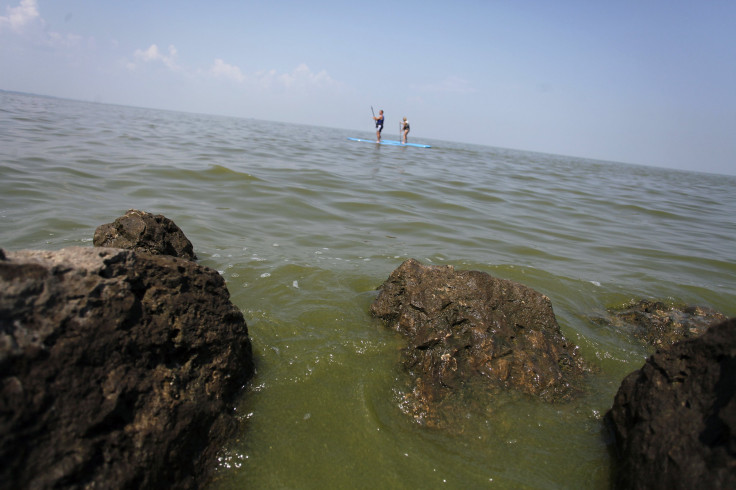Contaminated Drinking Water: EPA To Warn Public About Toxic Algae Outbreaks

U.S. environmental officials say they will start issuing health advisories for toxic algal blooms next year. The new step is a response to the growing number of blue-green algae outbreaks that threaten to contaminate drinking water supplies in lakes and ponds across the country.
The Environmental Protection Agency is aiming to issue advisories for cyanobacteria, a harmful form of algae, by May 2015, the start of algae season, Bloomberg BNA reported this week. The same toxic strand polluted Lake Erie in early August, forcing the city of Toledo, Ohio, to ban residents from using drinking water for days.
Last year alone, 20 states reported nearly 150 separate toxic algal blooms in lakes, rivers and ponds, according to National Wildlife Federation data. If ingested, certain types of algae-born toxins can cause fevers, vomiting and diarrhea. Direct skin contact can cause hives, blisters and rashes.
While industrial waste, sewage from septic tanks and lawn fertilizer also contribute to the problem, agriculture is the biggest source of the phosphorous and nitrogen that nurture harmful blooms, as reported by International Business Times in August.
The EPA doesn’t regulate harmful algal blooms, but it has been urging states to more closely monitor levels of toxins in source waters, BNA noted. EPA Administrator Gina McCarthy has also declared pollution from rising nitrogen and phosphorous levels to be a priority for the agency.
© Copyright IBTimes 2025. All rights reserved.





















